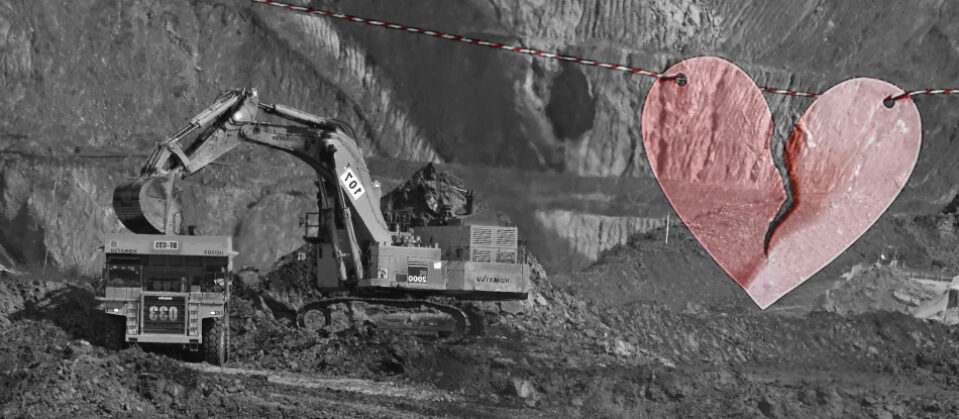It’s Not NEPA, It’s You
David J. Hayes (Past Executive Director) / August 6, 2020

In a cloud of obfuscation, the Trump administration recently finalized a destructive overhaul of National Environmental Policy Act (NEPA) regulations that would exempt many projects from environmental reviews, limit the consideration of viable alternatives, excuse failures to analyze climate-related and other serious impacts, and restrict how courts can enforce the law.
The administration tries to sell its major retreats variously as NEPA “clarifications” and “modernizations” that will address the “excessive paperwork and lengthy delays” that it lays at NEPA’s feet. Yet many of its gratuitous revisions strike at the heart of long-standing, judicially-confirmed applications of the law. By thumbing its nose at NEPA’s rich legal history, the administration is guaranteeing more litigation, and more delays. Meanwhile, while undertaking its own NEPA reviews, the administration has failed to implement legally required permitting reforms — adding to significant, avoidable delays in completing NEPA reviews. So, Trump administration, stop blaming NEPA. It’s you.
Far from being mere “clarifications,” the new NEPA regulations include a number of serious departures from NEPA’s statutory commands, doubtlessly triggering more litigation, and more delays.
The new final NEPA rule is rife with illustrations of this point. For example, the Council on Environmental Quality (CEQ) and the courts have confirmed that “indirect” and “cumulative impacts” fall within the ambit of environmental “effects” or “impacts” that must be evaluated under NEPA. For years, agencies and courts have developed a deep history of applying these principles in a multitude of contexts.
The administration, which generally finds NEPA to be more of a nuisance than a necessity, clearly wishes that this statutory and regulatory history regarding the “effects” and “impacts” that must be evaluated under NEPA simply disappears — even though the statute expansively calls for compliance “to the fullest extent possible.” So, audaciously, the final rule drops these terms completely. CEQ wrongly asserts that removing these references will “simplify” the types of environmental effects that should be evaluated under NEPA. To the contrary, by offering no statutorily-based rationale for suddenly ignoring these types of effects, CEQ is opening up a whole new front for the type of litigation delays that the administration professes wanting to avoid.
The final rule adopts a similar strategy to scale back the scope of NEPA analysis required for potential climate impacts associated with proposed projects. Given the existential threat posed by climate change, it seems odd that climate effects would not be treated as “significant” effects needing analysis under NEPA. Perhaps that is why the final rule chooses to remove entirely the definition of the “significant” environmental effects that must be evaluated under NEPA. At the same time, it uses new, limiting terms that have no basis in the statute to define the “affected environment” that must be explored in NEPA reviews. Henceforth, only effects that are “reasonably foreseeable” and have a “reasonably close causal relationship to the proposed action,” including effects that “occur at the same time and place as the proposed action” need be analyzed. (emphasis added).
If they stay in place, these made-up and poorly-disguised barriers to NEPA review would provide federal decisionmakers with an excuse to downplay or completely ignore a proposed project’s potential climate-related impacts, insofar as climate impacts may not be fully felt for a number of years, may be geographically remote, and associated with other actions. This may cheer climate deniers, but it is a recipe for more litigation delays as courts strike down environmental reviews that fail to forthrightly address climate concerns.
Second, the administration cannot blame “excessive paperwork and lengthy delays” on NEPA when its own failures to coordinate federal agencies’ permitting practices are causing major permitting delays.
While NEPA is a favorite whipping boy, it is the government’s failure to force all federal permitting agencies to engage early, and collaboratively — before commencing NEPA reviews — that is a primary cause of serious delays. The Obama Interior Department demonstrated the power of early agency engagement in the NEPA process by successfully “slashing the time needed to permit wind and solar projects by more than half — from four years to one-and-a-half years.” Congress subsequently converted these agency coordination strategies into legal requirements in the 2015 FAST Act.
Unfortunately, the Trump administration remains more interested in blaming NEPA for delays than implementing legally-required permitting reforms. The Interior Department’s recent bungling of the Vineyard Wind offshore energy project makes this point. Because the Interior Department failed to identify and incorporate the National Oceanic and Atmospheric Administration’s concerns about potential cumulative impacts before Interior prepared an environmental impact statement for the project, it was forced to produce a supplemental EIS that delayed the project by almost a year and a half. Had Interior executed its agency coordination responsibilities under the FAST Act, there would have been no delay. (The delay also could have been avoided, of course, had Interior itself undertaken a cumulative impact analysis at the outset, as it should have, given the major surge in related offshore projects. But NEPA compliance is not this Interior Department’s strong suit.)
So, again, it’s not NEPA, it’s you.
This page was updated on April 9, 2024 to better meet our accessibility standards. To see the page as it was initially published, click here.
